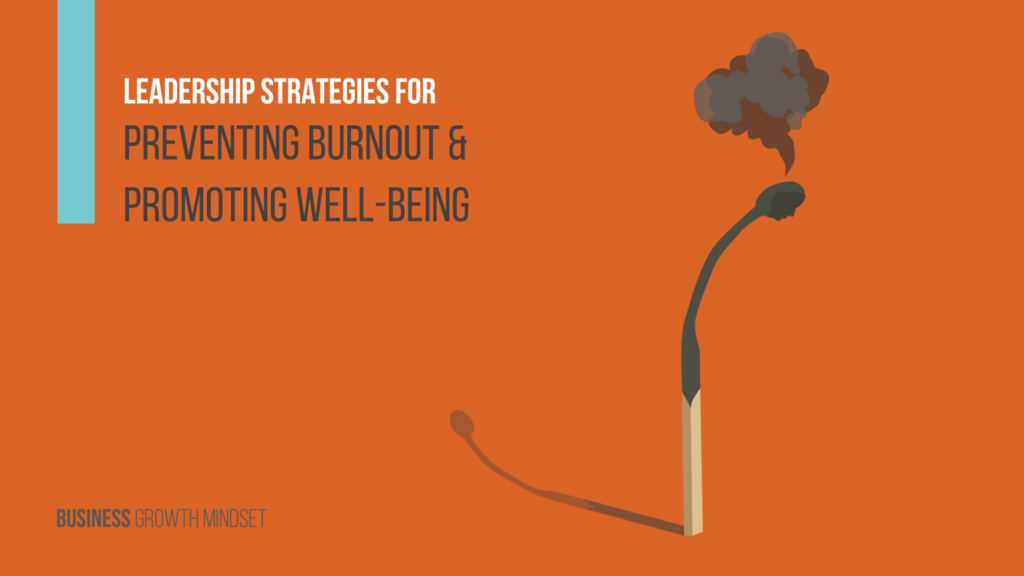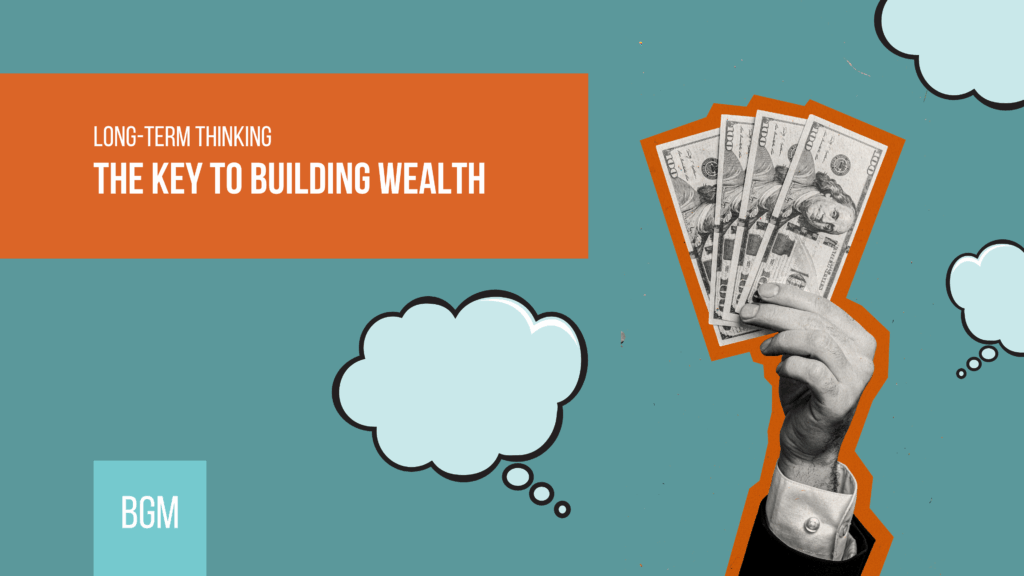Burnout – It’s a word that gets thrown around a lot, but when it hits, it can feel like a freight train. For leaders and employees alike, burnout isn’t just about feeling tired—it’s a state of emotional, physical, and mental exhaustion caused by prolonged and excessive stress.
It can occur when you feel overwhelmed, emotionally drained, and unable to meet constant demands. It’s more than just needing a break and can significantly impact your productivity, morale, and overall organisational health.
As a leader, it’s crucial to recognise the signs of burnout and implement strategies to prevent it.
So, how do you do that? In this blog I will share a few practical strategies that you can implement to prevent burnout and foster a healthier, more productive work environment.
Role Of Leadership In Identifying And Preventing Burnout
Recognising the signs of burnout and taking proactive measures to address it is essential for maintaining a healthy and productive workplace.
Leaders play a critical role in identifying and preventing burnout within their teams. As a leader, you have a unique vantage point that allows you to see the bigger picture.
By fostering a supportive work environment and promoting employee well-being, you can help mitigate the risk of burnout and ensure your team members remain engaged and motivated.
Recognising The Signs Of Burnout
Burnout can manifest in various ways, and recognising the signs early on is crucial for prevention. By being aware of these signs, you can promptly address burnout and support yourselves and the team’s well-being.
Here are some common symptoms to watch for in yourself and your team:
- Chronic fatigue and low energy levels: If someone is always tired and never seems to recharge, it’s a red flag.
- Decreased performance and productivity: Burnout often leads to a noticeable drop in work quality and output.
- Increased absenteeism and turnover: When employees start calling in sick more often or leaving the company, it might be more than just bad health.
- Emotional detachment and cynicism: If your team members seem disengaged or overly negative, burnout could be the culprit.
- Difficulty concentrating and making decisions: You or your team members struggling to focus and constantly second-guessing decisions are common burnout indicators.
- Physical symptoms such as headaches, insomnia, and digestive issues: These can all be physical manifestations of stress.
Creating A Supportive Work Environment
A supportive work environment is essential for preventing burnout and promoting employee well-being. By fostering open communication, creating a positive and inclusive work culture, and implementing wellness programs, you can create an environment where employees feel valued and supported.
Strategies For Fostering Open Communication
Open communication is crucial for building trust and ensuring that employees feel comfortable sharing their concerns. Here are some strategies for fostering open communication:
Regular Check-ins
Schedule regular one-on-one meetings with team members to discuss their progress, challenges, and well-being. These check-ins provide an opportunity for employees to voice their concerns and for you to offer support and guidance.
These check-ins don’t just have to be related to work progress —They can be a chance to discuss any personal challenges or stressors they might be facing.
Creating A Feedback-Friendly Culture
Encourage a culture of feedback where employees feel comfortable giving and receiving constructive feedback. Constructive feedback can help them feel valued. This can help you identify potential issues early on and promote continuous improvement.
Importance Of A Positive And Inclusive Work Culture
Creating a positive and inclusive work culture fosters a sense of belonging and goes a long way in preventing burnout. Celebrate diversity, recognise achievements, and encourage collaboration. When employees feel valued and included, they’re more likely to be engaged and motivated.
Implementing Wellness Programs And Resources
Wellness programs can be a game-changer. Providing employees with access to mental health resources, wellness apps, and professional counselling services can help them manage stress and maintain their well-being.
Empowering Employees With Resources And Flexibility
Empowering employees with the resources and flexibility they need can significantly reduce the risk of burnout. By offering flexible working arrangements and providing access to mental health resources, you can support your team’s well-being and work-life balance.
Offering Flexible Working Arrangements
Flexible working arrangements can help employees manage their work-life balance and reduce stress. Here are some options to consider:
Remote Work Options
Allowing employees to work remotely, even part-time, can provide them with the flexibility to manage their responsibilities more effectively.
Flexible Schedules
Offering flexible schedules, such as compressed workweeks or flexible start and end times, can help employees manage their time and reduce stress.
Providing Access To Mental Health Resources
Access to mental health resources is essential for supporting employees’ well-being. Here are some options to consider:
Wellness Apps
Provide employees with access to wellness apps that offer stress management techniques, mindfulness exercises, and relaxation tools.
Professional Counseling Services
Offering professional counselling services can provide employees with the support they need to manage stress and maintain their mental health.
Implementing Effective Workload Management
Effective workload management is crucial for preventing burnout. By ensuring fair task distribution, setting realistic deadlines, and encouraging time off and breaks, you can help employees manage their workload and reduce stress.
Fair Task Distribution
Ensure tasks are distributed fairly among team members, taking into account their strengths, skills, and workload. This helps prevent overburdening certain employees and ensures that everyone contributes equally.
Setting Realistic Deadlines
Set realistic deadlines for tasks and projects to prevent employees from feeling overwhelmed. Ensure deadlines are achievable and provide adequate time for completion.
Encouraging Time-Off And Breaks To Recharge
Encourage employees to take regular breaks and time off to recharge. Promoting a culture that values rest and relaxation can help prevent burnout and maintain productivity.
Promoting Work-Life Balance
Maintaining a healthy work-life balance is essential to prevent burnout. By setting clear boundaries, prioritising tasks, embracing downtime, leveraging technology wisely, staying organised, maintaining physical and mental health, and seeking support when needed, you and your team can achieve a better balance between personal and professional lives.
Set Clear Boundaries
Set clear boundaries between work and personal life. This can include defining work hours, turning off work-related notifications outside of work hours, and creating a dedicated workspace at home.
Prioritise Your Tasks
Prioritise tasks to focus on what is most important. This can include using tools like the Eisenhower Box or ABC Method to categorise tasks based on urgency and importance.
Embrace the Power of Downtime
Downtime is crucial for recharging and maintaining productivity. Schedule breaks, take vacations, and enjoy days off to prevent burnout. Encourage employees to take regular breaks throughout the day to rest and recharge. This can include short breaks for stretching, walking, or simply stepping away from the desk. Promote the importance of taking vacations and days off to relax and rejuvenate.
Leverage Technology Wisely
Encourage employees to use technology to streamline tasks and improve efficiency. This can include using project management tools, communication platforms, and automation software to reduce the burden of repetitive tasks.
Stay Organised
Help employees stay organised by providing tools and resources for effective time management. This can include using calendars, to-do lists, and project management tools to keep track of tasks and deadlines.
Maintain Physical And Mental Health
Promote the importance of maintaining physical and mental health through regular exercise, healthy eating, and mindfulness practices. Encourage employees to prioritise their well-being and provide resources to support their health.
Seek Support When Needed
Don’t be afraid to seek support from friends, family, or professional mentors. Having a strong support system can help navigate the challenges of entrepreneurship.
Investing In Employee Development And Growth
Investing in personal development opportunities can prevent burnout by keeping employees engaged and motivated. Offering training, mentorship programs, and opportunities for career advancement can help employees feel valued and supported.
Building Emotional Resilience In Teams
Emotional resilience is the ability to adapt to stress and adversity. Building emotional resilience in teams can help employees cope with challenges and prevent burnout. This can include providing training on stress management techniques, promoting a positive work environment, and offering support during difficult times.
Sustaining A Healthy Workplace
Preventing burnout is an ongoing effort that requires commitment from both leaders and employees. By recognising the signs of burnout, creating a supportive work environment, empowering employees with resources and flexibility, implementing effective workload management, promoting work-life balance, investing in employee development, and building emotional resilience, organisations can foster a healthy and productive workplace.
Preventing Burnout Together
If you need help in preventing burnout and sustaining a healthy workplace, we are here to assist you. Kristian Livolsi is a transformational leader and expert in creating balanced, productive work environments. With extensive experience in business coaching, Kristian specialises in developing strategies that address the root causes of burnout and enhance overall organisational health.
Through his coaching, Kristian provides strategic guidance on recognising early signs of burnout, setting realistic goals, and implementing effective communication channels. He will work closely with you to develop personalised strategies that cater to the unique needs of your teams, ensuring that you and your employees can thrive.
Ready to take the next step towards a burnout-free workplace? You can visit our website for more information and contact us right away




